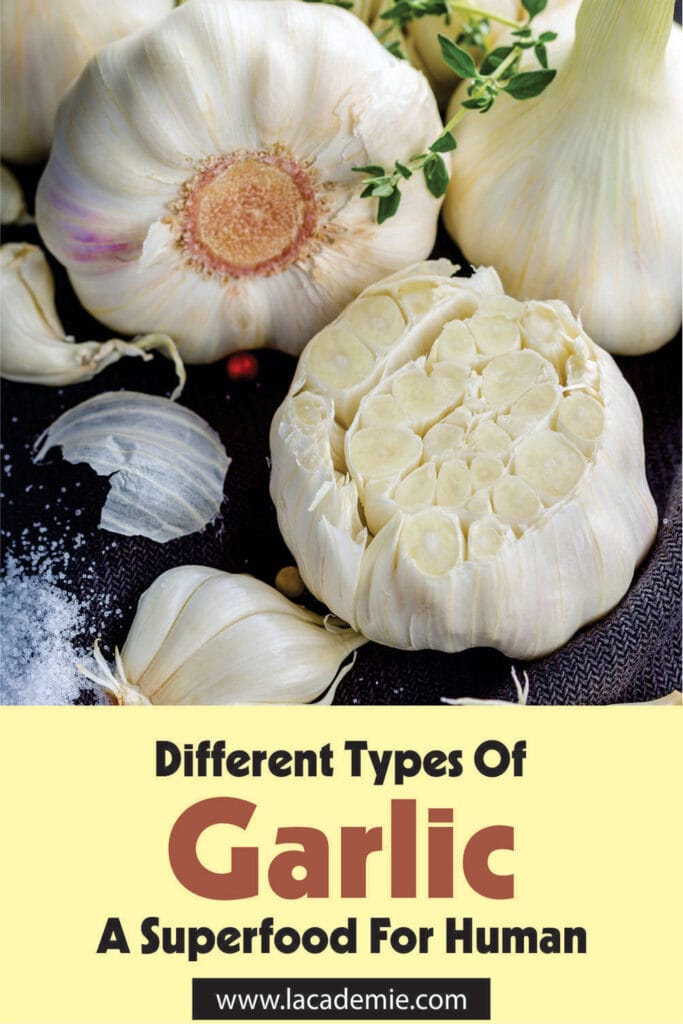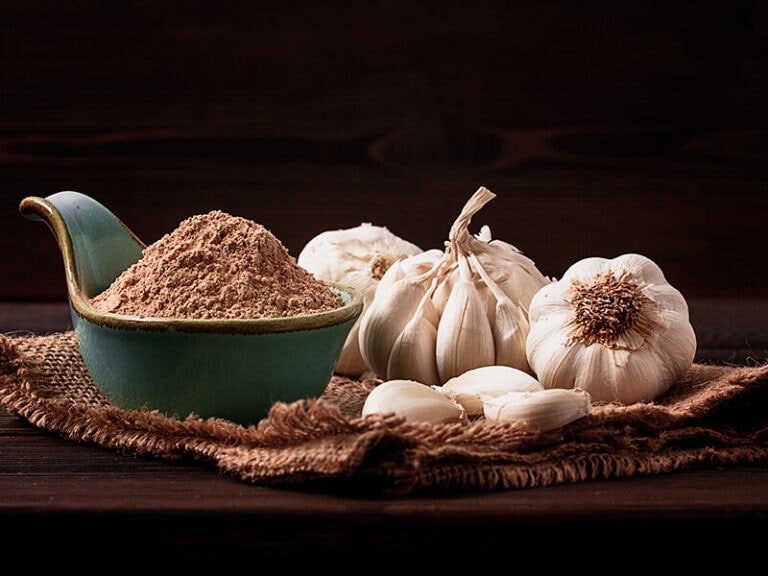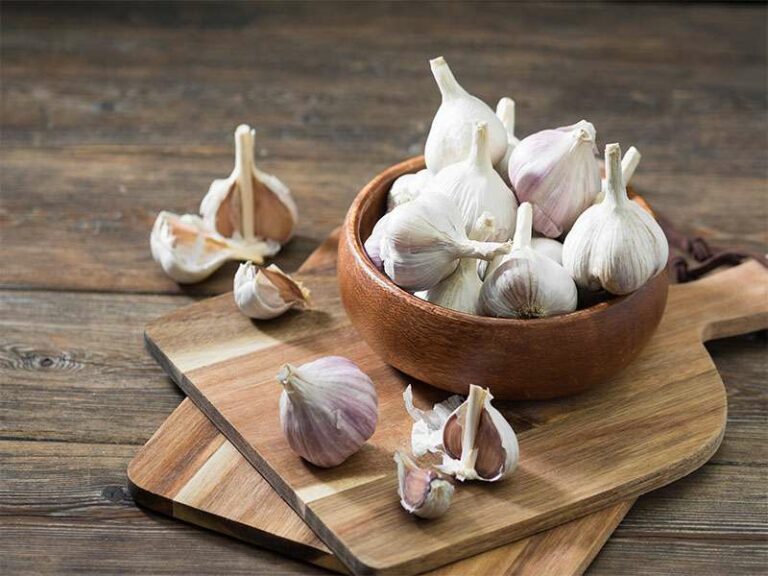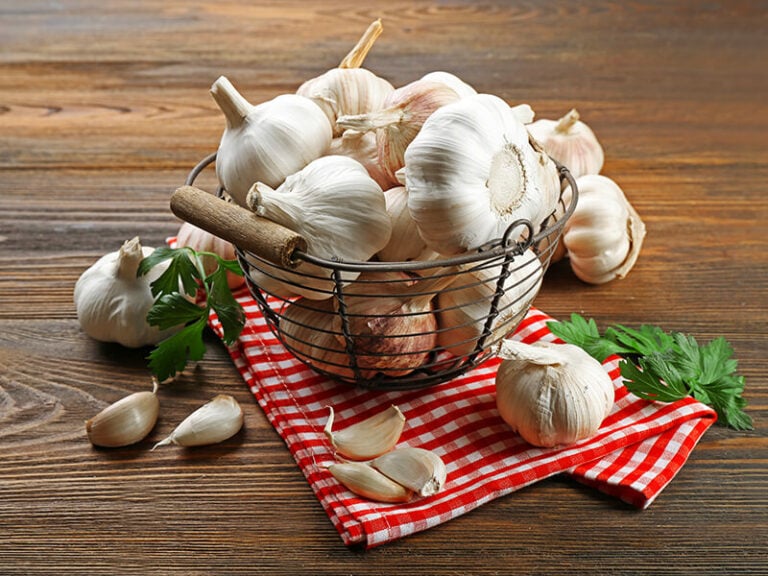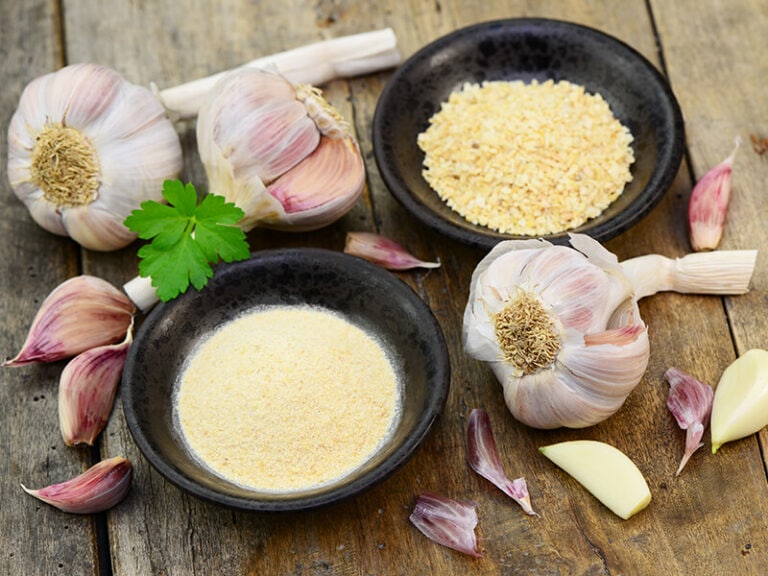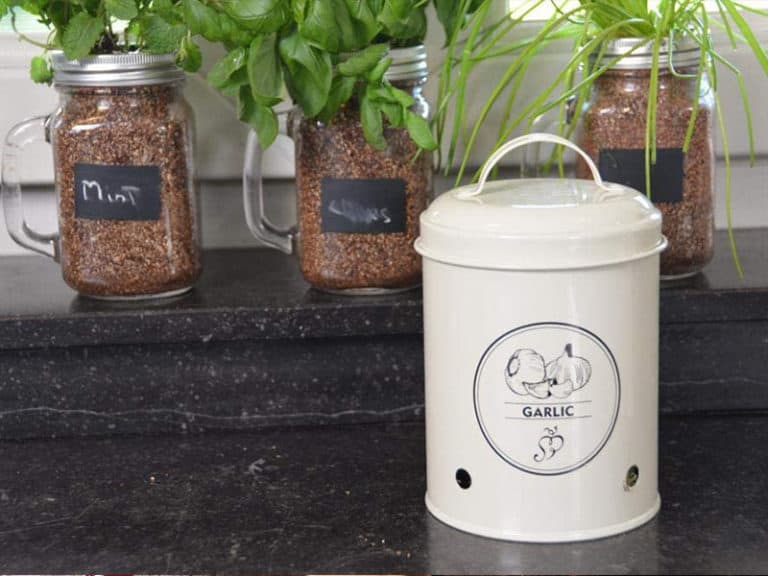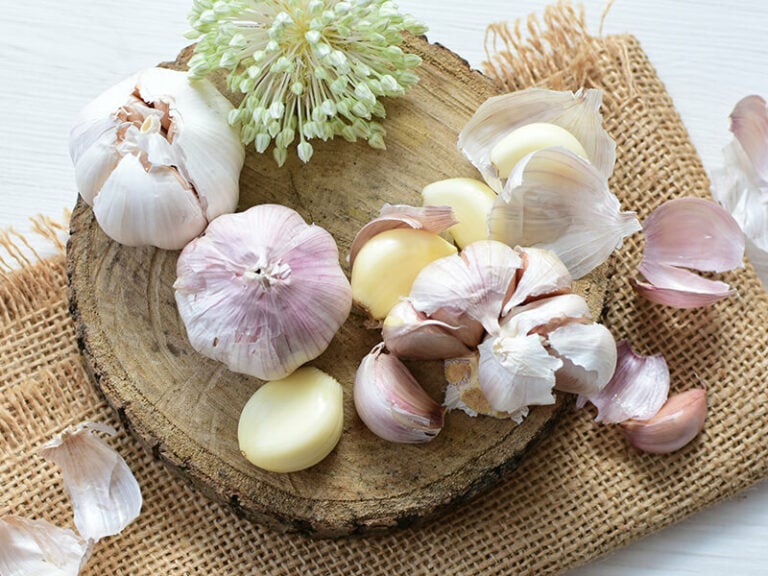How many different types of garlic have you known?Garlic has played a vital role in your daily cooking, but it is not easy to name all of their types. Let this post open your mind to new possibilities of using this superfood in your life.
This post will show you all you need to know about garlic and its varieties. Furthermore, you will know their particular characteristics and how to use them for the best result. Are you ready to explore this superfood? Take a look to broaden your horizon.
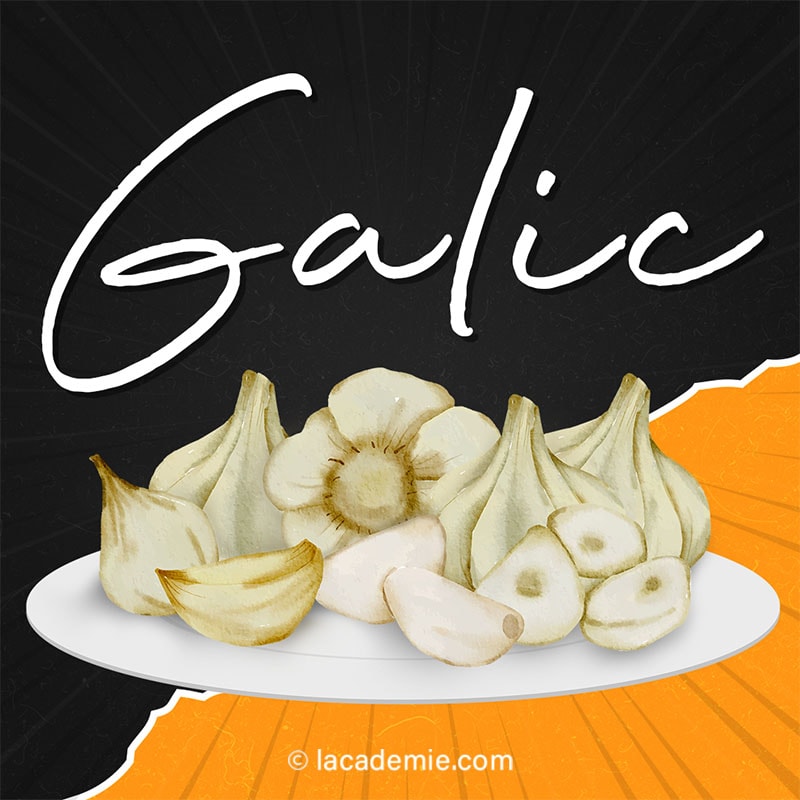
Garlic And What Make It Become Superfood
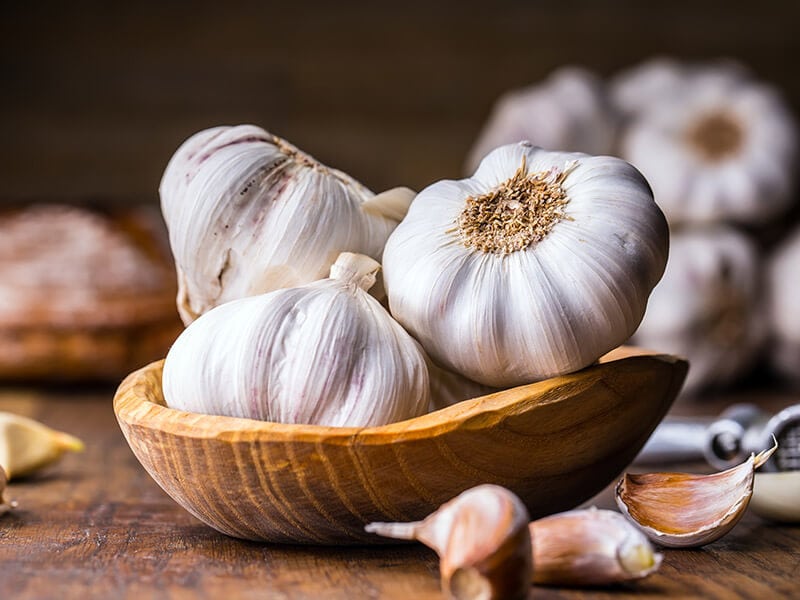
Garlic (Allium sativum) is a vegetable from the genus Allium and has a close relationship with onions, leek, and chives. Many people have loved this flavoring for several thousands of years. Let’s discover the truth behind its popularity.
People believe garlic has been used since 5000 years ago when the Giza pyramids were established. Garlic originates from Central Asia; then, it gradually became popular and spread worldwide.
Garlic features a signature pungent flavor and offers numerous health benefits. It is vital in lowering the risk of lung cancer, reducing high blood pressure, and minimizing your cholesterol levels. That’s why garlic has been used for medical purposes for centuries.
Garlic is an ideal ingredient for culinary purposes. Whether you eat it raw in a salad or cook it up with stir-fried, roasted, or baked recipes, garlic will delight your taste magnificently.
Moreover, garlic scape is one of many ideal replacements of chives. You can apply many forms of garlic in cooking, including fresh garlic, granulated garlic, minced garlic, and garlic powder.
Many people confuse the difference between granulated garlic and garlic powder because they are all ground; however, they are not the same concept.
Want to know more about garlic? Check here for the answer.
Hardneck Vs. Softneck: What Are The Differences?
Depending on garlic’s hardiness and clove development pattern, this “superfood” is divided into two main categories: hardneck and softneck. If you wish to discover more about the two types, keep reading!
Hardneck Garlic
Hardneck garlic is one of the two main types of garlic with a central stalk that derives from the bulb’s central part. This stalk will turn hard when mature, as suggested by this variety’s name.
This kind of garlic has a complex flavor when compared to softneck type. The favor will vary based on their species ranging from hot to spicy and even musky.
Coming out with slightly thick skin, hardneck garlic has only a few large cloves. This variety of garlic also has a shorter shelf life than soft varieties.
If you want to extend the life expectancy of garlic for long-term use, you should utilize high-quality garlic keeper. The effect may depend on the varieties of garlic.
Softneck Garlic
Unlike hardneck garlic, softneck types don’t have any stalk in the center. They only contain leaves, and these leaves are still soft at maturity. Softneck garlic often has a mild flavor and a papery skin, making it hard to peel.
Softneck varieties have more cloves than those hardneck types. Therefore, these cloves tend to be smaller. A remarkable thing about softnecks is that they don’t produce scrapes like hardnecks.
9 Hardneck Garlic Varieties To Expand Your Knowledge
Hardneck garlic is a type of garlic with a stiff stalk in the center. Let’s have a quick look at the table below to see some brief information about its varieties and how to apply these vegetables in cooking.
1. Creole Garlic
Creole hardneck garlic produces small to medium bulbs with a characteristic color, setting this type apart from other hardnecks. At first glance, you will be impressed by the beautiful shades of reds and purples on the outside of this garlic.
Many people liken its colorful skin to a charming rose. Creole garlic is suitable for growing in warm climates, while colder regions will cause some difficulties for its growth. You can keep this garlic for use for up to 10 months.
Creole garlic has 8 to 12 cloves that boast a nutty and delicate flavor. The spicy taste will dissipate fast, leaving a more pleasing aftertaste. Like other hardnecks, Creole garlic is good for eating raw or cooked.
2. Middle Eastern Garlic
Compared to other kinds of hardneck garlic, Middle Easter garlic is much lower, only 3 feet tall. This variety notices a brown appearance with some typical purple stripes and a characteristic mild flavor.
As the name implies, Middle Eastern garlic is a hardneck type originating in Middle Eastern countries, where the warm climate is the best condition to grow this garlic. Therefore, you can cultivate this garlic well in regions with similar weather patterns.
The bulbs of Middle Eastern garlic can range from small to large. Moreover, they have a bumpy texture. You can also apply this garlic in cooking like other hardneck varieties.
3. Purple Stripe Garlic
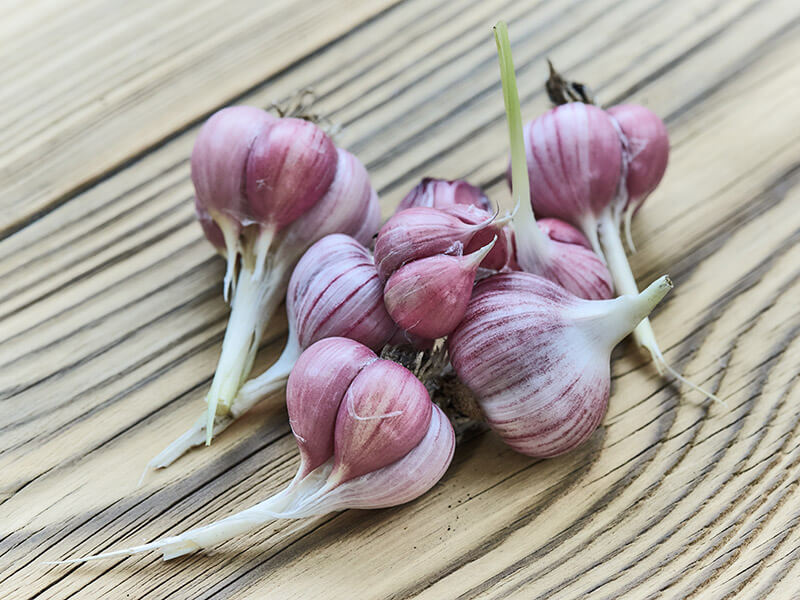
Purple Stripe garlic is a hardneck garlic variety that originated in Georgia. This type often contains cloves ranging from 8 to 12 in 1 pulb with a signature tan color. These cloves have a characteristic crescent shape and are smaller than other hardneck garlic types.
As the name suggests, you can guess that this garlic has lots of vibrant clots or stripes on the skin. The loose wrapper makes this garlic easy to peel. Purple Stripe garlic has a robust spicy taste, but it’s not overpowering enough to ruin your dishes’ taste.
Its flavor will turn sweet when baked, making it an ideal option for baked dishes and garlic ice cream. You can also utilize Purple Stripe garlic to add depth and complexity flavor to roasted recipes or bread and pizza.
Ground Purple garlic is also a fantastic condiment. Sprinkling it over your salad dressings, sauces or stews will bring you a perfect experience. Compared to Rocambole, Purple Stripe garlic has a longer shelf life. It’s good for about 6 months when stored appropriately.
4. Porcelain Garlic
One of the most beautiful varieties of garlic, Porcelain garlic, has a smooth and thick exterior. This feature also gives this garlic type its unique name. Sometimes Porcelain garlic also has some purple markings like other kinds.
If you prefer a robust garlicky character, Porcelain garlic is a good option. It has a moderate to rich taste, earthy muskiness, and a strong spicy flavor. You can use it as a flavor booster in savory dishes (like some recipes made with cannellini beans, marinades, and stews.
When mature, this garlic can grow up to 6 feet. It produces large bulbs containing about 2 to 6 cloves. And it is quite larger in size compared to other hardneck types. Moreover, this garlic variety is also good for storing (about 8 months).
Discover one of the best ways to harvest Porcelain garlic.
5. Marbled Purple Stripe Garlic
Marbled Purple Stripe garlic is a product from Eastern Europe and Russia. It has a strong signature flavor with just 4 to 8 cloves. Therefore, these cloves are smooth and much larger than other varieties.
This type of garlic is straightforward to recognize, thanks to stripes of red and cream on its skin with a lustrous note. When mature, a Marbled Garlic Stripe plant can reach a height of 5 feet. This type of garlic can adapt to various climate conditions.
Marbled Purple Stripe garlic is one of the best types of garlic for baking. Moreover, you can use it for sauteing, roasting, stir-frying, or even eating this garlic raw. The flavor it can offer will satisfy your taste. You can store this variety well for up to 7 months.
6. Glazed Purple Stripe Garlic
Let’s continue the list today with another subtype of the purple stripe family, Glazed Purple Stripe garlic. This garlic variety with beautifully colorful skin originated from Eastern Europe.
It has a silvery-white outer with signature purple stripes. With a strong and metallic appearance, Glazed Purple Stripe garlic features a rich and complex flavor, but its taste is delicate and is not overly hot.
This garlic often contains from 6 to 12 cloves, and these cloves can vary in various sizes. Its shelf life can reach up to 6 and 8 months.
Glazed Purple Stripe garlic is suitable for growing in cold to mild climates. It’s best for eating either cooked or raw. This hardneck garlic variety is very tender, so you should grow it in the garden for use instead of for commercial purposes.
7. Rocambole Garlic
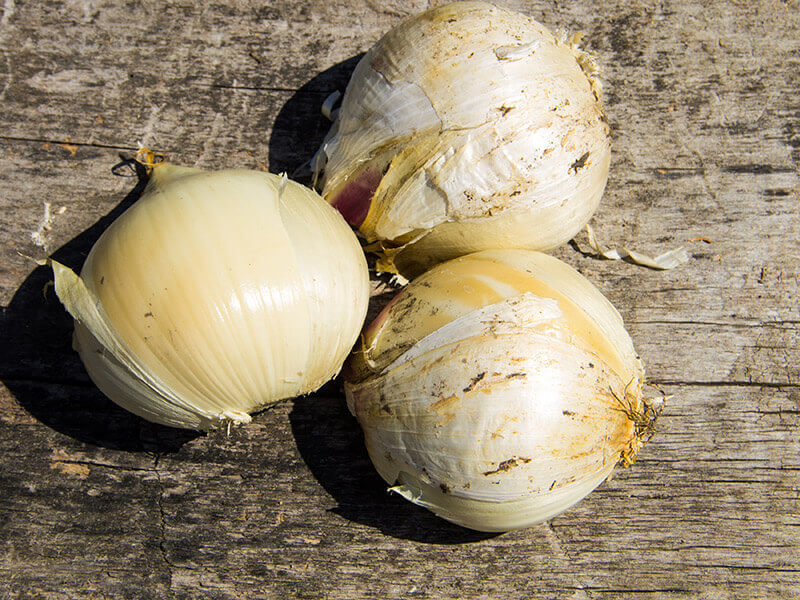
Another hardneck garlic that I would like to share with you is Rocambole garlic, the top choice of chefs and garlic lovers. Rocambole garlic has a robust and authentic garlicky flavor with a hard and loose exterior.
The color of Rocambole garlic can range from striped to red and pink. Appearing with 6 to 8 cloves, this garlic is very straightforward to peel but challenging to grow. It’s only suitable for very cold climates.
Compared to other hardneck types, Rocambole garlic’s shelf life is shorter (no more than 6 months). You can use this garlic to add a strong aroma to salads or boost the taste of curries. Rocambole garlic is suitable for pickling and drying.
8. Asiatic Garlic
As suggested by the name, Asiatic garlic comes from the expansive land between Central Asia and the Pacific coast. Having a gorgeous dark purple color, Asiatic garlic consists of medium bulbs. Each bulb has approximately 4 to 8 cloves.
You will notice the flavor range of this garlic. It’s not fixed but will vary from spicy to sweet depending on the varieties of Asiatic garlic. Its shelf life is also almost similar to other hardnecks, about 5 to 6 months.
The two cultivars of Asiatic garlic that are most widely available are Asian Tempest and Pyongyang. You can easily find Asiatic garlic in various Asian dishes such as stir-fried, baked, or roasted delicacies. It’s also an excellent option for making marinades.
9. Turban Garlic
Turban garlic will end today’s discussion about hardneck varieties. It is quite different in terms of color, featuring a scorching, spicy taste unlike ordinary garlic.
This variety of garlic comes from several areas, including Asia, Mexico, and Eastern Europe. Chinese Purple and Shandong types are the two popular kinds belonging to this hardneck garlic.
Are you curious about Turban hardneck’s name? Its name comes from the shape of the tip of its stem, which resembles a turban. This garlic has light purple stripes on the exterior. It has from 6 to 12 cloves per bulb.
Turban garlic’s stem is weak and pliable enough for you to braid. Furthermore, you can utilize this garlic for roasting, sauteing, and stir-frying. It will give your dishes a distinctive flavor. On the other hand, Turban garlic has a short shelf life when compared to others.
4 Softneck And Other Kinds Of Garlic
I think you already have a more comprehensive view of hardneck garlic, right? Next, I will introduce softneck varieties and some other types that are also very popular in the garlic world. Check this out now.
10. Elephant Garlic
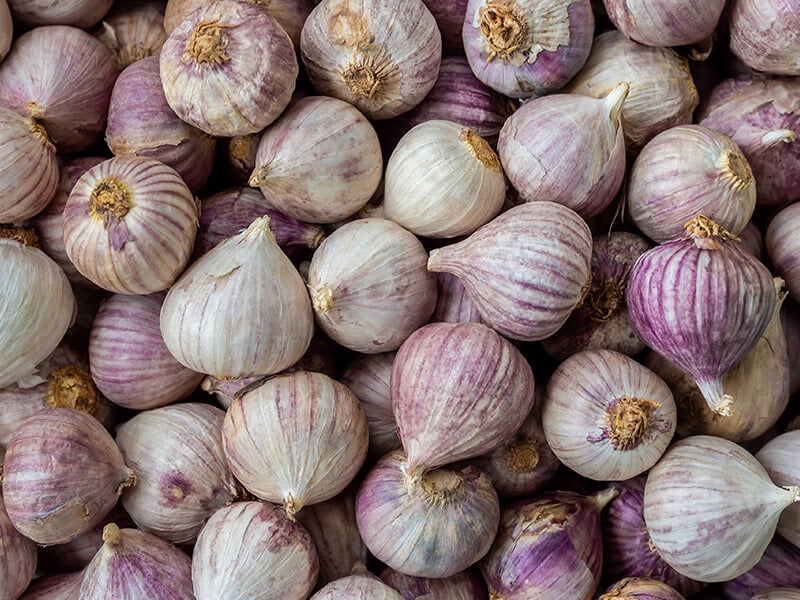
Let’s start the journey of discovering different types of garlic today with Elephant garlic, a variety from Central Asia. Are you curious about its name? The huge size of Elephant garlic bulbs has earned it the name. It could be available as a softneck or a hardneck.
Elephant garlic often consists of four to six large cloves, much fewer than other varieties. This garlic often comes out with a papery wrapper. Furthermore, Elephant garlic’s skin can range from white to yellow.
Many people believe Elephant garlic is a member of the leek family due to its appearance. Although Elephant garlic is not a “true garlic”, it still features a garlicky flavor. However, its taste is slightly milder than regular garlic.
You can utilize this garlic in various delicacies, such as vinaigrettes (a salad dressing), salads, roasted, and even stir-fried dishes. This ingredient is good to eat raw or cooked. Because of the mild taste, Elephant garlic is unsuitable for replacing others.
The giant cloves of this garlic make it easy to peel and prepare for cooking. Elephant garlic is an ideal option if you want some spices not as pungent as normal garlic.
Ordinary garlic Vs. Elephant garlic: Which tastes better?
11. Artichoke Garlic
If you are looking for a type of garlic that is easy to grow, Artichoke garlic is a good choice. It is not only adaptable but also matures swiftly. The first time using this garlic, you will feel its mild and slightly spicy taste, simpler than other kinds.
This pale purple-skinned garlic has a flattened appearance. It generates from 12 to 25 cloves of various sizes. These cloves overlap each other, similar to an artichoke, hence the name.
Compared to the Silverskin variety, this type’s cloves are larger. However, they are considered flatter than other varieties of garlic.
You can buy this garlic at any grocery store around you. This variety is good for sauteing or slow cooking. It has a high moisture content, so molds can sometimes grow on its cloves.
Therefore, if you want to store them for long-term use, you should trim or braid them right after harvest. Their shelf life can extend from 8 months to one year.
12. Silverskin Garlic
Silverskin garlic is another softneck variety with a flavor ranging from mild to hot in pungency. Silverskin garlic has significantly much more cloves than Artichoke garlic. They might have been between 8 and 40 cloves in several layers.
Its tight clove skin makes silver garlic one of the longest-lasting members in the family of garlic. You can store Silverskin garlic at room temperature for up to one year or more without damage. However, it’s challenging for you to peel this softneck garlic.
You can buy Silverskin garlic at any grocery store. It has thin pale skin with a soft pliable neck. This component is suitable for making soups and is best used in garlic braids.
13. Solo Garlic
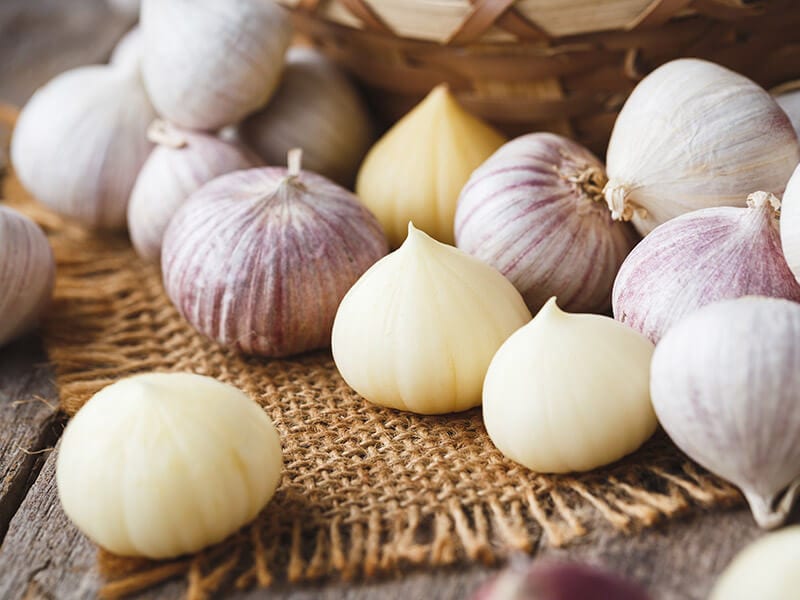
Solo garlic, also called single bulb garlic or single clove garlic, is a product of Yunnan, a landlocked province in Southwestern China. Solo garlic features a mild and faintly scented flavor with only one large clove.
Thanks to Solo garlic’s unique texture, it’s very straightforward for you to peel. Moreover, what sets Solo garlic apart from other multi-clove garlic is its white skin with some purple stripes.
Solo garlic is perfectly versatile. You can take advantage of its medical properties, such as reducing high cholesterol levels, curing high blood pressure, and lowering the risk of getting cough and cold.
Furthermore, Solo garlic works well in cooking. You can treat it as an ideal vegetable to enhance the flavor of various delicacies, such as stir-fry dishes, curries, soups, and other meat recipes.
This guide will help you grow Solo garlic at home right now.
Employ The Right Type Of Garlic In Your Cooking From Now On
Garlic’s numerous advantages must have come as a surprise to you, right? I hope the information above has provided you with a better understanding of the significance of garlic in your life. For healthier meals daily, choose the sort that best suits your needs.
Don’t hesitate to share this post on your social media to help more people know about this helpful knowledge. If you love this article, please leave a comment to share with me your thoughts. Finally, thank you for your reading and contribution!
